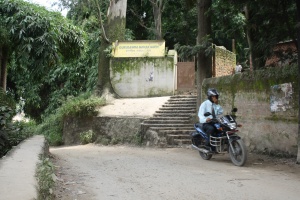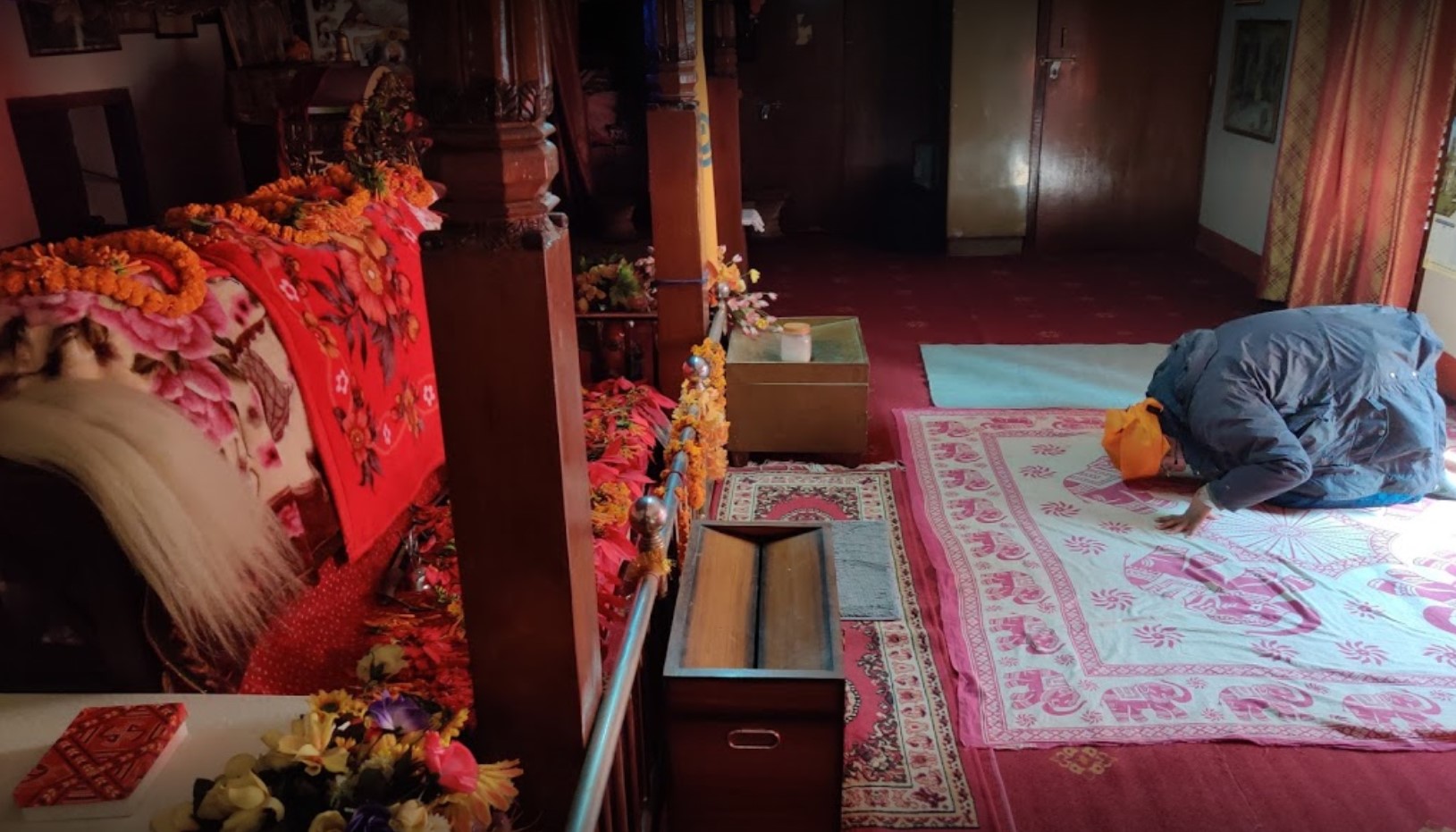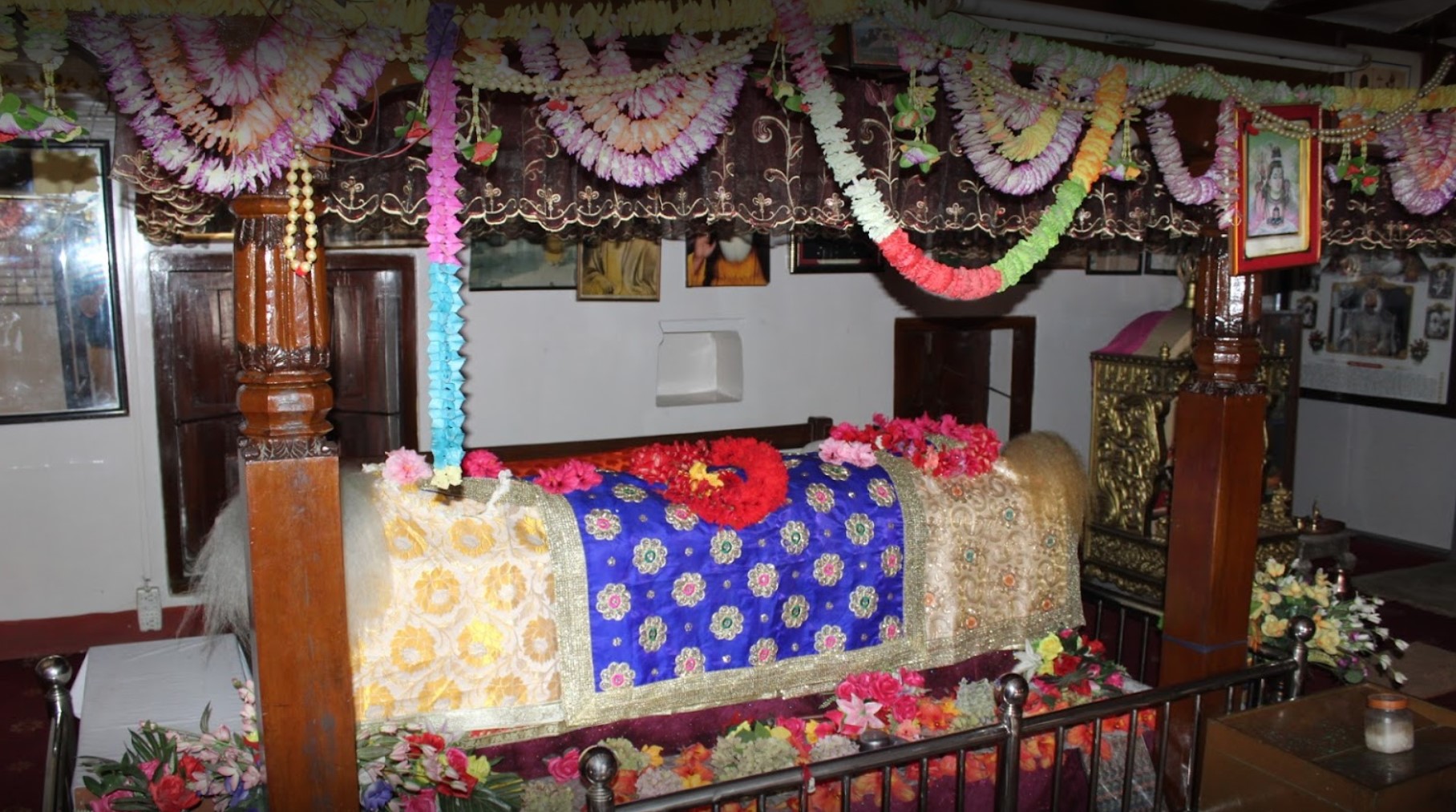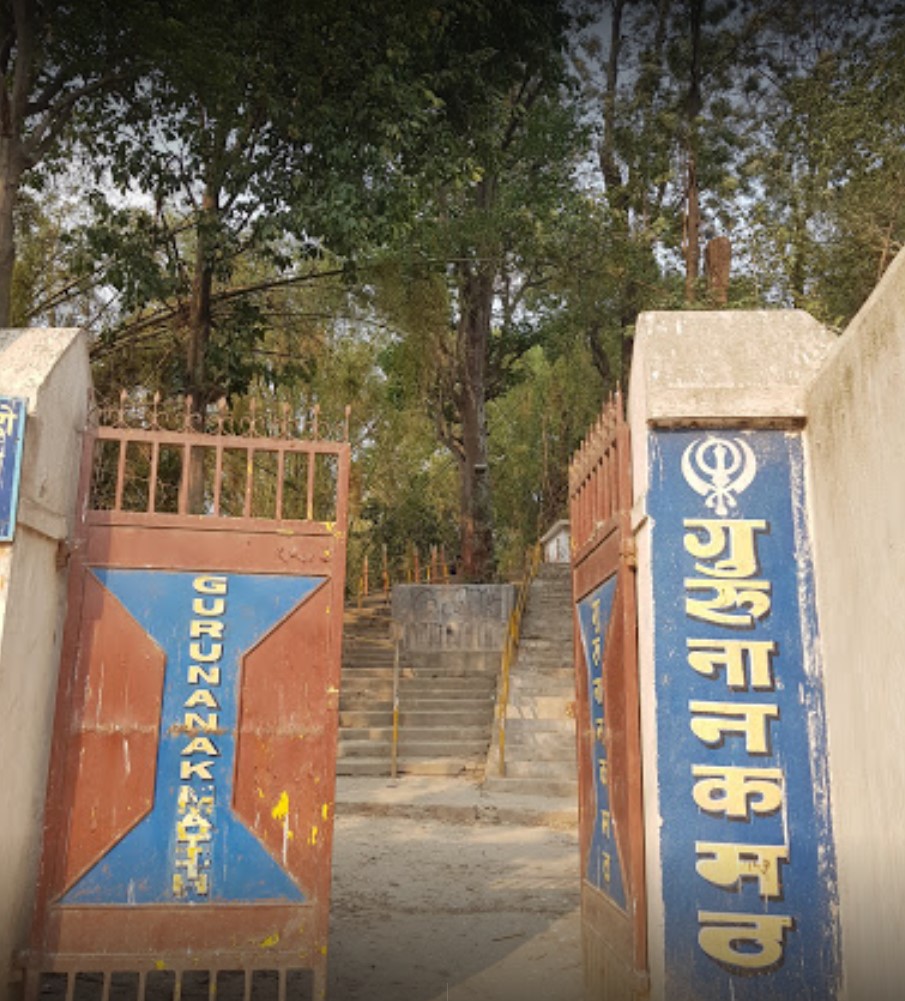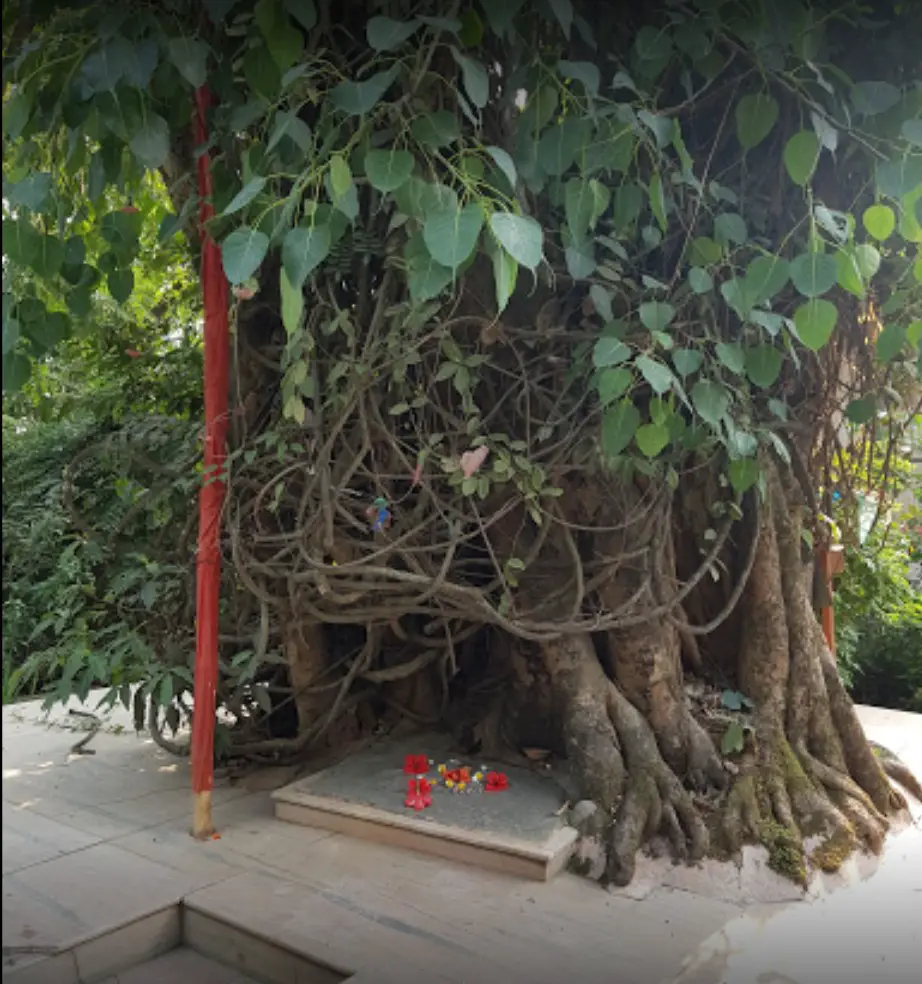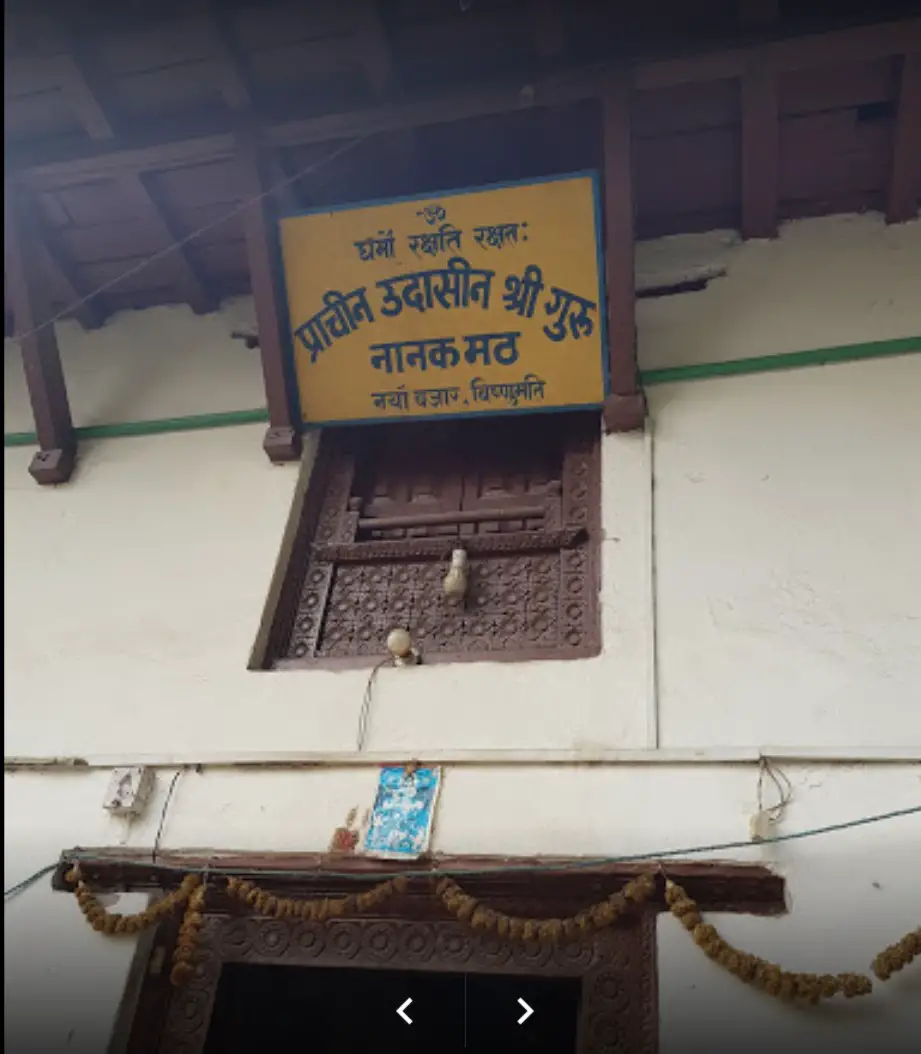Gurudwara Guru Nanak Math, Kathmandu
Books on Kathmandu are silent about the Shrine. It is not on the tourist map. No coaches park below the small forested hill by the river on the road to Balaju. The temple is left to bird song and the occasional visitor who either knows it is there or by chance comes upon the small weathered sign which says, “Guru Nanak Math†(27°43’31?N 85°18’19?E).
An arching stairway leads through trees and bamboo to the small building which from the outside looks like any Nepali farmhouse. I found the climb up the stairs refreshing even though I was a bit breathless. The city, which now encroaches on the fields about the hill, is so screened by greenery that one can almost forget its existance. The busy sound of traffic trails further and further behind. Through openings in the trees can be seen the river and a high mountain. A small grassy clearing just before the house is just the kind of place a weary traveler would have welcomed. Cool. Quiet. Undisturbed.
A stone slab with two carved feet marking the spot where Guru Nanak lay in meditation at the Shrine
The doorway to the lime-washed house is plastered with ochre earth. The black painted door is small in the way of old Nepal, so one stoops to enter. An old man, asleep on the clean, earthern floor sits up and smiles a welcome. His dog, curled up beside him, takes no notice. I beg his pardon. Perhaps I’ve made a mistake. I’m looking for the Guru Nanak Math.
He leads me barefooted across a freshly plastered courtyard at the centre of which is a Shrine with a tulsi plant growing out of the top. It is difficult to make out the deities in the small niches but he agrees, as I think aloud, that they are Vishnu, Shiva and Parvati, Hanuman and Pashupatinath.
In a verandah are steep stairs which we climb to enter into a small dark room. At the centre, under a canopy, is an altar draped in red. Here, says my companion, reposes the Granth Sahib, written by Guru Nanak himself in letters of gold. I ask him to repeat what he said because if he is correct, then this almost forgotten Shrine in a land not normally associated with the saint possesses a rare and unique relic.
Strangely, the preist who is Nepali, wears none of the symbols of Sikhism; turban, kara, kirpan or kanga. However, his graying hair is unshorn and, for a Nepali, he sports a fair beard. I learn, with undisguised excitement, that he belongs to the earliest unreformed order of Sikhs who are often unrecognizable from Vaishnavite Hindus. At Pashupatinath, I would have taken him for a Sadhu.
He whisked me out of the courtyard into a small garden wild with shrubs and flowers. Under a large pipul tree he pointed out a stone slab on which were carved two feet, laid with roses. “The Guru’s,†he said. “It is at this spot that Guru Nanak sat in meditation. In that little Shrine behind you, are buried the ashes of a Nepali king.â€
We sat together on mossy steps leading up to the Shrine, a strong scent of jasmine in the air as two bulbuls were pecking about the carved feet. And there he told me the story of the temple of the golden book and the Shrine against which we sat.
It seems a Malla king of the early sixteenth century �” the priest did not know his name �” suffered a disturbed mind. His brothers, alarmed by his behaviour, banished him to India. Roaming forlornly through the holy city of Benaras he came upon the saint Guru Nanak and begged him to cure his affliction. After many visits and much beseeching, the Guru advised the king to return to his kingdom where his health would be restored.
Miraculously, the saint preceded the king to Kathmandu for there he was, meditating under a pipal tree on a hill beside the river. The king visited him at once, begging the Guru to return him to the palace. Guru Nanak refused to do so, saying that in this serene spot he had all he wanted. So the king had a temple built for his Guru and a small Shrine for himself where he often came to meditate. When the king died, some of his ashes were buried in the Shrine according to his last wishes.
A later king, Rana Bahadur Shah, also of unsound mind, is said to have found solace at the Guru Nanak Math. He gifed considerable land to the temple so it might never want for support.
Perhaps the records have long since perished because slowly the gurdwara lands have been encroached upon until only the hill remains. It would be tragedy if modern hungers consume the trees and push concrete within reach of the peaceful old building.
When I went back to sketch the garden and the temple, I was met by another old priest. I asked him if I might see the Guru’s footprints. “Ah yes,†he said, “they are the Guru Nanak’s feet, but they are also Vishnu’s. They are both the same.â€
And who, I asked, wrote the golden book enShrined in the temple. “Sri Chand, the Guru’s son,†he said. Was it not Guru Nanak?
By then the Guru had gone to Tibet, he said. “But it is all the same. Our gods are our gods.â€
Obviously the lovely, lonely Guru Nanak Math is in need of a Sikh Scholar to unravel its truths and legends. Until then it will remain a half-forgotten temple on a wooded hill threatened by the brick and concrete advances of Kathmandu.
Courtesy: Keertan.org
Attributes






